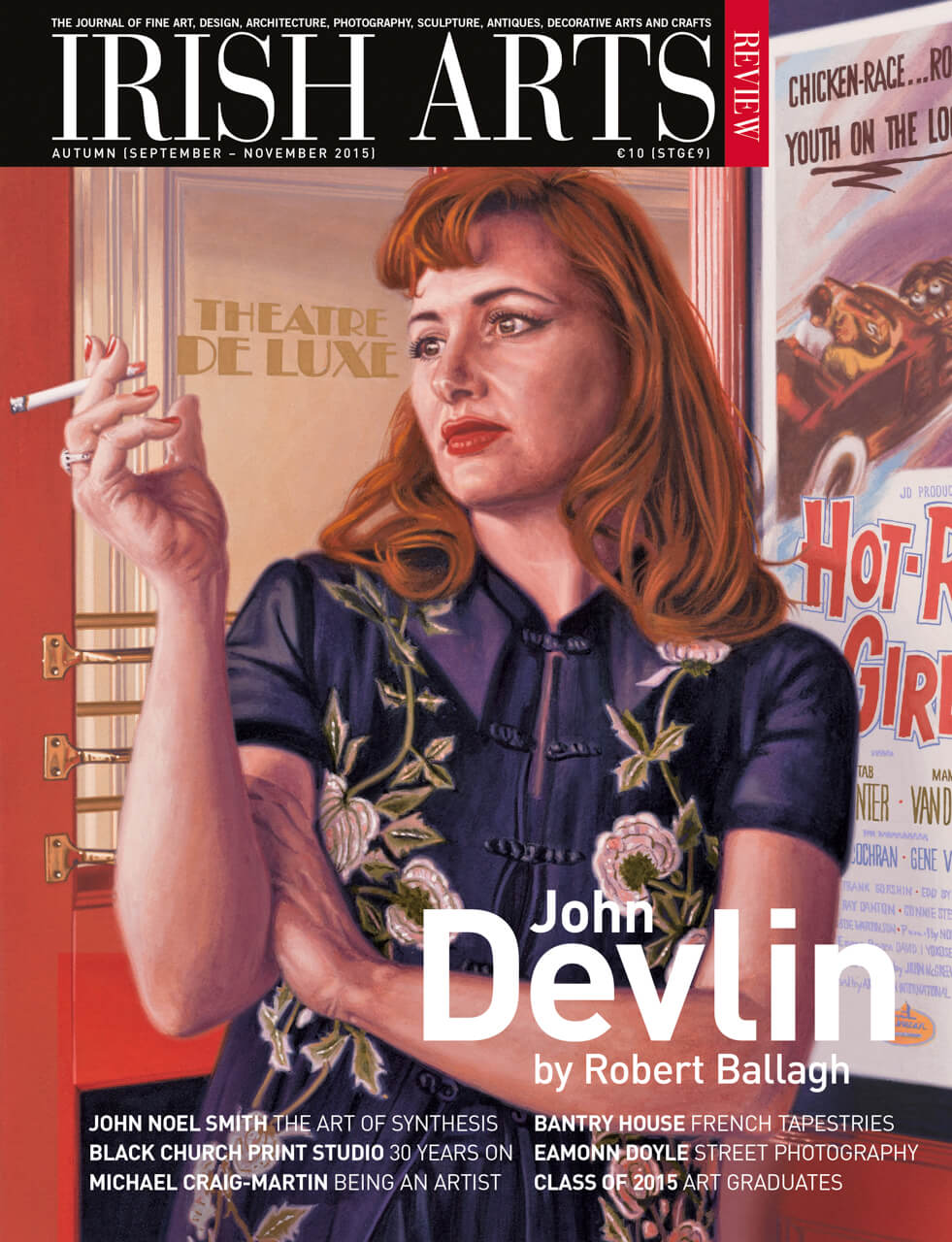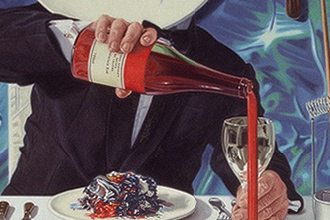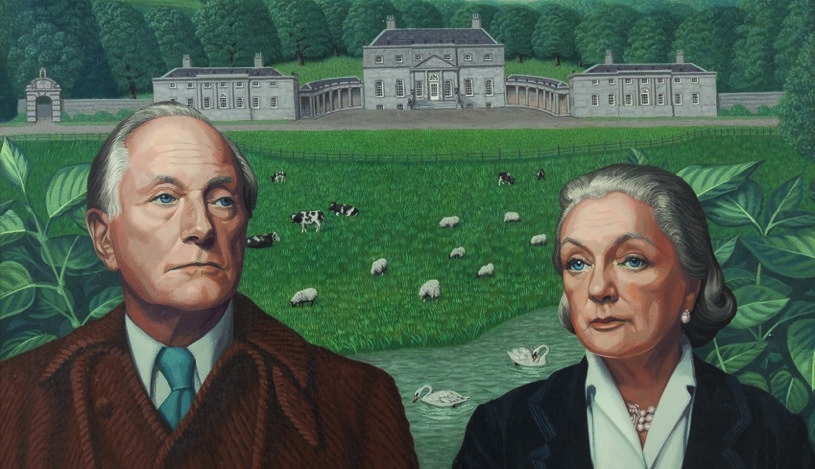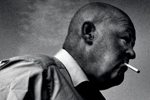
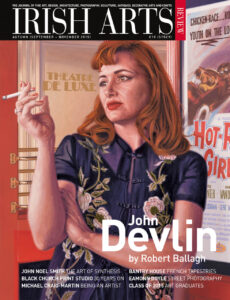
Eamonn Doyle has been lauded for his original contribution to street photography as seen in his first book I. Now with a second title, On just launched and featured here, Ros Kavanagh gives an analysis of his method.
‘On’ is a word redolent of Beckett, implying forward movement, however difficult, in the face of trial and apathy. It is also an intent, a trajectory taken by choice, a desire. These images are taken from Eamonn Doyle’s recently launched photobook, On, and they benefit from the association the title implies.
Beckett aside, it is perhaps the basic act of writing a story, creating a character and making a place for them to act, that offers us an understanding of Doyle’s work. He momentarily lifts his subjects out of their own reverie and, unknown to them, presents us with their image. They are placed in a cityscape that is recognizable as Dublin, but it is an environment of the photographer’s creation, monochrome and oppressive. The buildings lean in over the figures, giving a dramatic foil to their movement. This doppelg√§nger city is their home. They become protagonists in a story, as the author projects a place to deliver their journey and to echo their own desires.
Drawing a comparison to an author and their characters is useful here. Doyle’s subjects are observed, captured and presented irrespective of their co-operation, they have no complicity in the process. Added to that, his approach is at times intrusive on his subjects’ personal space. However, in breaching that sphere he takes full advantage of his trespass. The closer his camera gets, the more subtlety it captures. In some of Doyle’s images, you can almost feel their breath on the air, hear those cogs turning. In the way that cinema is a medium for the internal monologue, this work is an imaging of thought.
It is worthwhile noting that the photographer, while keeping his status as an observer, is right there with his subjects, his camera down at hip level. This allows the unfolding narratives to dominate the field of view, rather than the often superior gaze of a camera when it is arbitrarily poked into life on the street.
Another aspect of Doyle’s process reinforces this connectedness: the images have a readable dynamic range from the deepest shadows to the brightest shaft of sun. There does not seem to be any diffusion or haze in the air, giving each scene a quality of hyper-clarity. You can imagine that the whole scenario is being played out in a gigantic fishbowl, where both the observer and the observed share the same conditions and fate.
This cheek by jowl connection Doyle has with his subjects leads me to recall a passage in Kurt Vonnegut’s Breakfast of Champions where the author ends up sitting in a restaurant with some of his characters. You begin to realize that even though the writer is the creator of this reality, he has little control over his own place in it, and in a way ends up becoming one of his own players. This blurring of roles is useful to keep in mind when reading the images.
In some of Doyle’s images, you can almost feel their breath on the air, hear those cogs turning.
A more enlightened perception of the interconnectedness of intent here is given by Daido Moriyama, the Japanese street photographer who is cited as an influence by Doyle: ‘For me, cities are enormous bodies of people’s desires, and as I search for my own desires within them, I slice into time, seeing the moment.’ The word ‘desire’ here is key. In this sense it doesn’t mean the pursuit of pleasure as such, but an individual’s intent that leads to action. The latency of the word however suggests that this intent comes from the heart. A city will pulse with a million iterations of desire. Responding to it with a camera and an awareness of your own desire seems to be a natural thing to do. It could be said that in this way, Doyle’s work becomes an essential part of the city’s collective consciousness.
For a photographer, working on the street is never straightforward; a perception has emerged recently that photographing people without permission in a public space is prohibited by law. This is actually a confusion generated by data protection, and the many photographic, privacy and child protection policies, that govern the way images are made and stored of people in certain places. This vigilance is important and worthwhile, but we need to remember that in the public realm the law is far less proscriptive and is actually more specific to the home than the street.
Eamonn Doyle’s images are a rare but important part of the city’s burgeoning ecosystem. We need to ensure that these interactions are protected. They reflect a version of our home that may not be immediately recognizable to us, but prompt us to look again. They layer their presence over our experience, as for example, our yearly celebration of Joyce’s city demonstrates. Much in the way that the two gallants will always be walking down Rutland Square (Parnell Square), Doyle’s images make our experiences of Dublin more layered, and richer as a result.
Eamonn Doyle is at AIPAD Photography show, New York with Michael Hoppen Gallery 14-17 April 2016.
All images © The Artist.
Ros Kavanagh is a Dublin-based photographer of architecture, performance and visual art.
